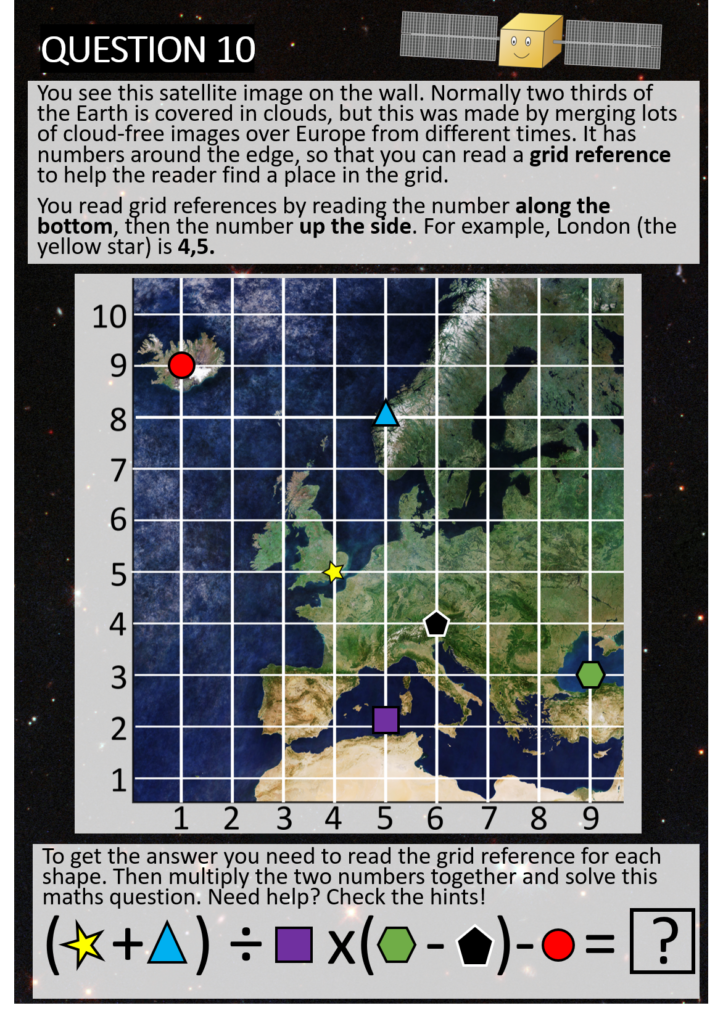
Need some help? Hint 1 will give you a nudge, hint 2 will give more explanation on how to read grid references, and this answer will give you everything you need to work out the maths problem.
Click here to go to the previous question, or the next question.
Extension Activity 1
This image is one of the European Space Agency’s (ESA) image of the week, taken by the satellite Sentinel-3A (Copernicus Sentinel data (2017), processed by Sinergise/ESA). This and more beautiful images of the Earth, taken by lots of different satellites, can be found here. Which of these images is your favourite? Do you like the ones with or without clouds?
Extension Activity 2
To practice grid references, why not draw your own map with buried treasure somewhere? Then you can draw a grid and use a grid references to tell someone where the treasured is buried! Will your map be a treasure island? Will there be an ‘X marks the spot’ on your island – will it be in the right place?
Extension Activity 3
Google Earth is a brilliant way to look around the Earth. It is a mosaic of lots of satellite images without clouds, and combined with height information so you can view things in 3D. Can you find the places you read grid references for in today’s activity? The red circle is an icelandic glacier, the yellow star is London, the blue triangle is a Norwegian fjord, the purple square is the Mediterranean sea, the black pentagon is the Alps and the green hexagon is the black sea.
Here are links to some more interesting places: place 1, place 2, place 3, place 4, place 5, place 6. Or you can click ‘I’m feeling lucky!’ in Google Earth to be taken to a surprise place in the world! What can you think these places are? Are these places man-made or natural? Can you see buildings? Or lakes and rivers? Islands? Volcanoes?
Can you find your house on Google Earth? Or where you last went on holiday?
Tweet us your screenshots of interesting GoogleEarth images and the reason why you like them to @EoCdt, or email them to [email protected]. We’d love to see them!



